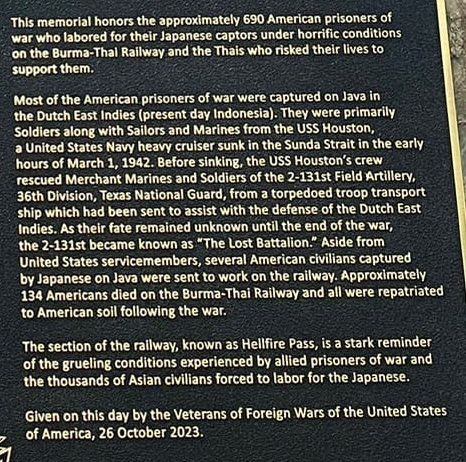First a word of caution! There are two museums with essentially the same name. What I’ll refer to as the ‘original’ museum is on the south side of town on the river bank. It is operated by the monks of Wat Chai Chumphon Chana Songkhram.
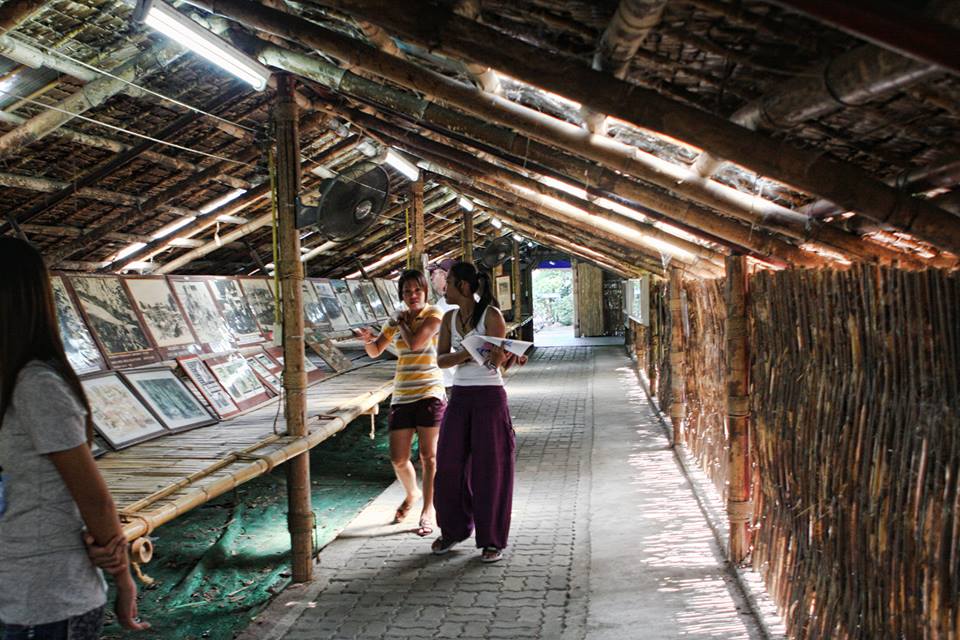
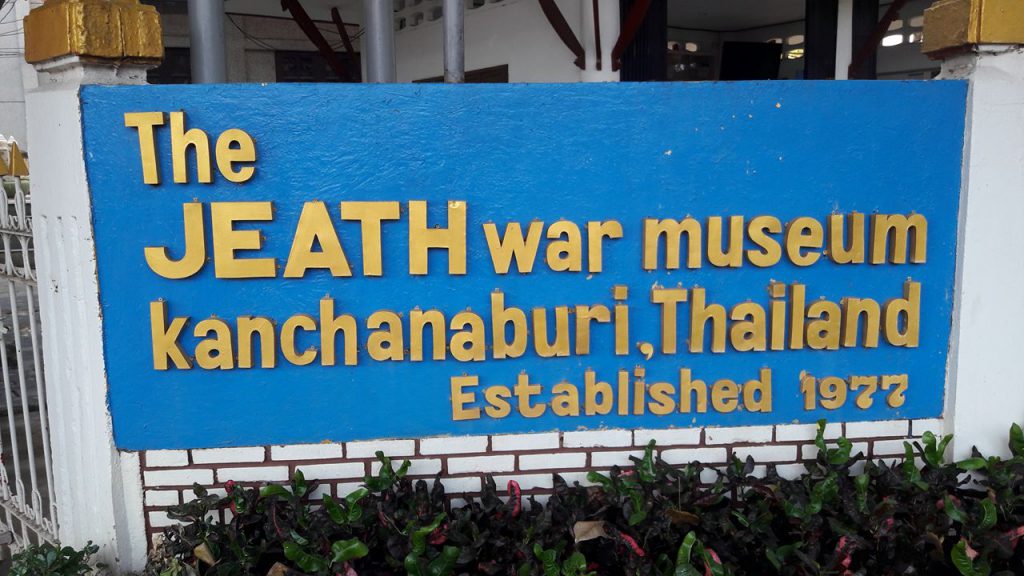
Perhaps this museum’s most icon contribution is a re-creation of a typical TBR POW-camp hut and its display of photos and artwork of the era. Prior to the internet, this was how most interested tourists learned of the POW’s ordeal.
The second is a more recent addition. It is immediately south of the Bridge. It seems to have usurped the JEATH name (possibly without permission). What little I can determine suggests that it is operated by a Japan-based consortium. While this is the larger and ‘fancier’, it seems a lot less ‘authentic’.
The original museum has been criticized by some on WIKIVOYAGE:
https://en.wikivoyage.org/wiki/Kanchanaburi
JEATH War Museum (Phíphítháphan Songkhram Wát Tâi (Wat Tai War Museum)), Pak Phraek Rd (Adjacent to the Wat Chai chumphon temple complex 1 km south of town centre). 08:30-18:00. The acronym JEATH stands for the primary nationalities involved in the construction of the railway: Japanese, English, Australian, American, Thai and Holland. The free guide leaflet concludes with these salutary words, “May Peace Always Conquer Violence”. Exhibits are housed in a palm hut, modeled on the type of buildings in which Death Railway POWs would have slept. Also displays a section of the first wooden bridge, recreations of the POW barracks and miscellaneous military paraphernalia. Downstairs is a somewhat incongruous exhibit of prehistoric Thailand complete with semi-erotic murals. The temple complex next door is interesting, although a cross-river boat departing from the riverside is the best attraction. The museum is time-worn, with many of the exhibits rusty or damaged by insects and the weather. Overall it is tatty and amateurish, and it may strike you as an insult to those who suffered here; far superior is the Thailand-Burma Railway Centre [emphasis added]
This site refers to the newer museum as:
World War II Museum and Art Gallery, Mae Nam Khwae Rd (About 50 m from the Bridge over the River Kwai). 8:30-17:30 daily. This well-sign posted complex houses a bizarre collection of museums and exhibits, most of which are poorly maintained and labelled. To your left as you enter is the “War Museum”, a 4 storey building encrusted with statues, which starts off with a little Burmese shrine but is mostly devoted to pre-WWII Thai history through the ages and is filled with wall paintings of kings and racks of rusty pistols. There are good views of the bridge from the roof of the riverside building. Above the WWII museum is the most bizarre section, housing (among other things) dusty stamp collections and a gallery with wall paintings of all Miss Thailand winners. The WWII and (old) Jeath Museum is lurking in the basement.
On-line sites often co-mingle photos and reviews of these two sites, adding to the confusion. There is no question that they differ vastly in their purpose. The original, established in 1977 by the abbot of the adjacent Buddhist temple, is a low-budget affair that over the years has not had proper attention nor maintenance. In recent years, there have been some ‘up-grades’ and additional buildings and historical materials added.
The newer seems to be a purely commercial operation preying on the tourist trade from the nearby Bridge. All in, it seems a bit crass. The jumble of displays and painted murals make it seem as if the owners tossing in anything that even remotely relates to the Thai-Burma Railway and then some extraneous stuff just for good measures (i.e. “ a gallery with wall paintings of all Miss Thailand winners” cited above).
It was with great disappointment that I learned that even the remnant of the wooden bridge on display i a fake as well. If one looks closely at the base of the display, it is sitting on a number of concrete pilings driven into the river bank. By definition that original wooden bridge had no concrete!
So it seems that the ONLY item in this entire for-profit establishment that is directly related to the TBR, is the glass case of human bones of romusha dead! Such is the true nature and legacy of this disreputable place!
There is no doubt that the must see museum in this area is the Thai-Burma Railway Centre (TBRC).
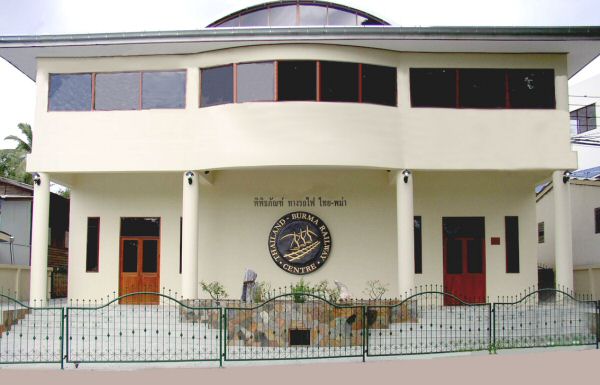
Founder and curator Rod Beattie has dedicated his life (and fortune) to relating the full and true story of the TBR in all aspects. The museum he has created is a masterpiece of TBR history.
Thailand-Burma Railway Centre, 73 Jaokannun Rd (Next to Kanchanaburi War Cemetery, near the south of Mae Nam Khae Rd), ☏ +66 3 451 2721. 09:00-17:00 daily. Generally considered to be the best source of information regarding World War II in Thailand, railway construction and route, and the conditions endured by POWs and Asian labourers. Very moving exhibits, including video and interactive displays. A visit takes at least one hour, and probably longer if you want to read everything. Fee includes a free coffee or tea at upstairs cafe, where you can sit at the window bench overlooking the Kanchanaburi War Cemetery. It is a good place to sit and reflect after your tour of the centre. Far superior to the JEATH War Museum. 140 baht.
There is a fourth site in the area which I only mention to caution visitors to avoid. On-line it is known as World War ll Bridge Project Kanchanaburi Thailand AKA Japanese POW camp.
https://www.facebook.com/worldwar2bridgeproject/
I am led to believe that this is a fore-runner of a “convention center” to be built in the future. The site is on the west-bank of the river at the end of the Bridge. Currently, it is a strange conglomeration of food stalls and bizarre displays of WW II-era equipment. Apparently (see the FB citation above) it has also been the site of a music festival and boxing matches.
There is a small area laid out as a “POW camp” but seems to bear no resemblance what so ever to the actual TBR camps. There are even references to NAZI activity!
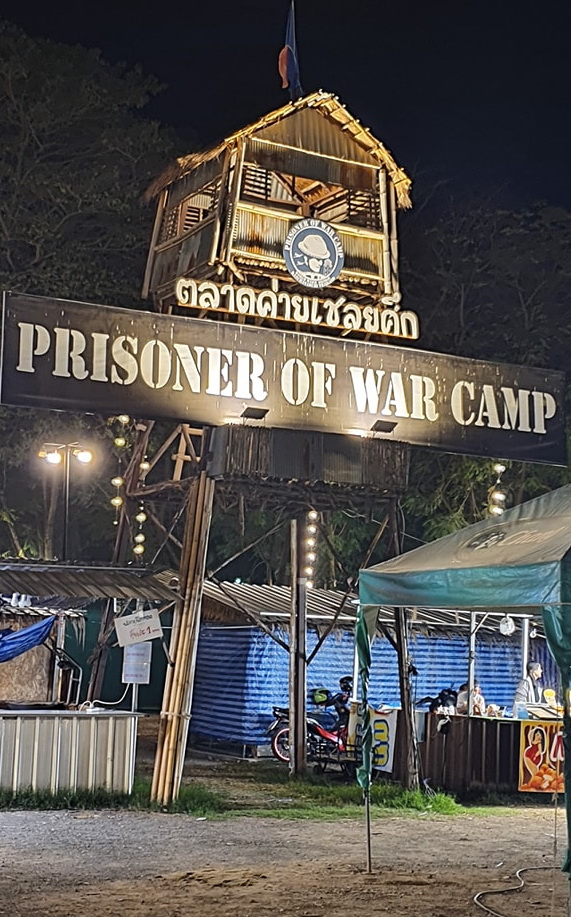
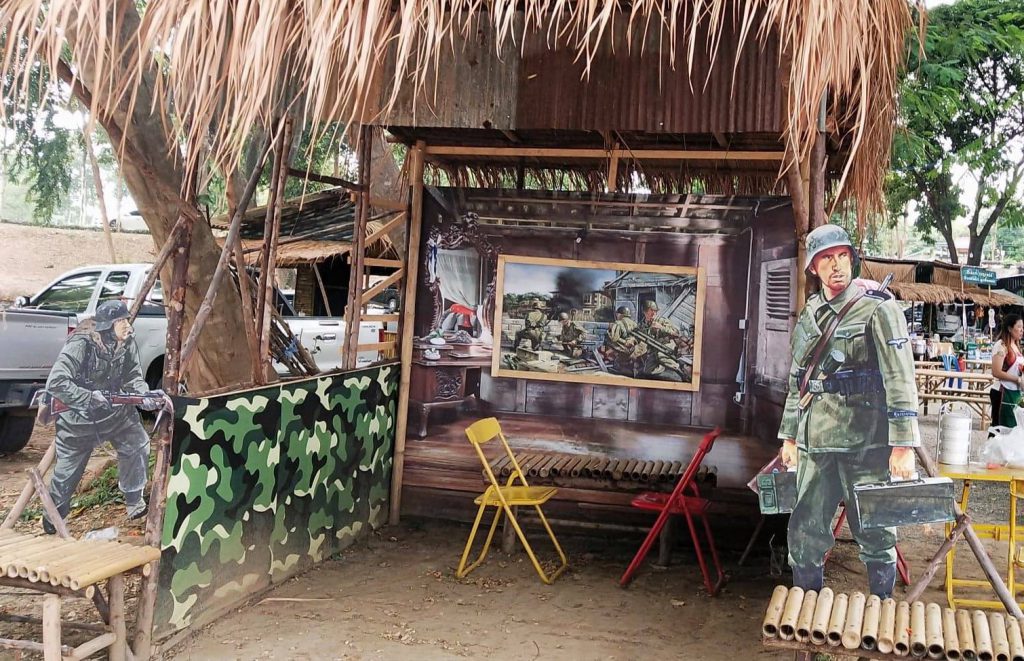
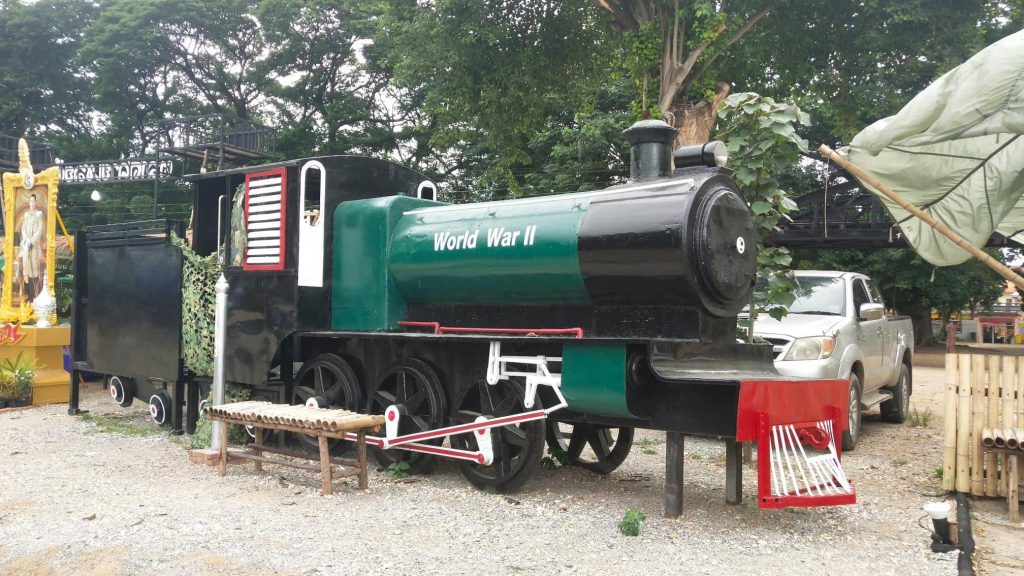
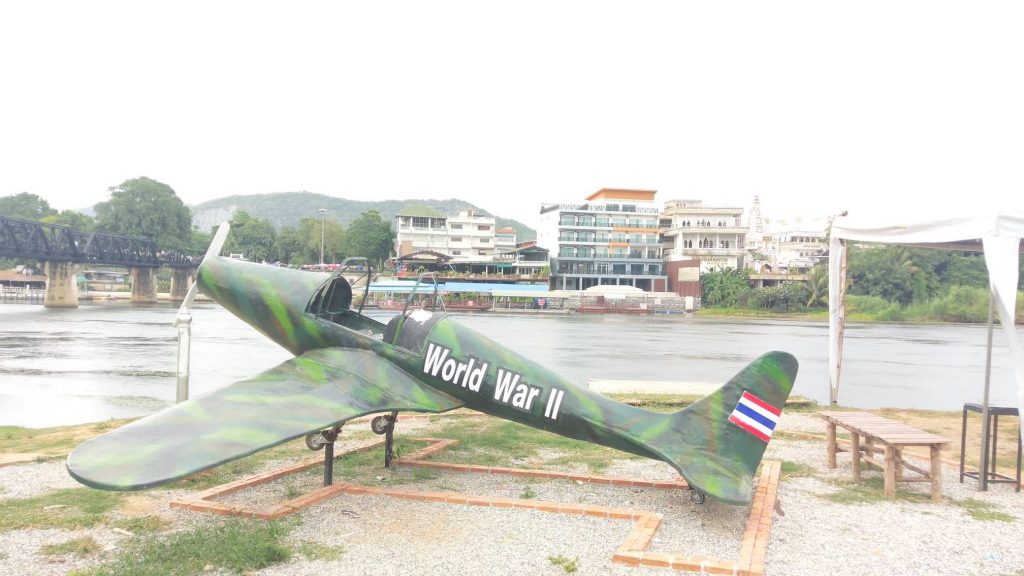
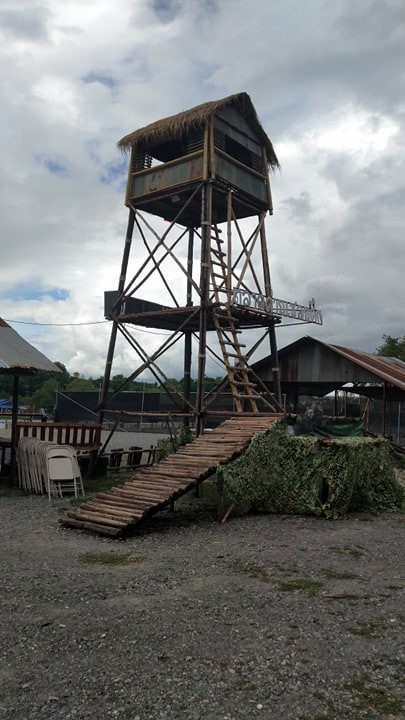
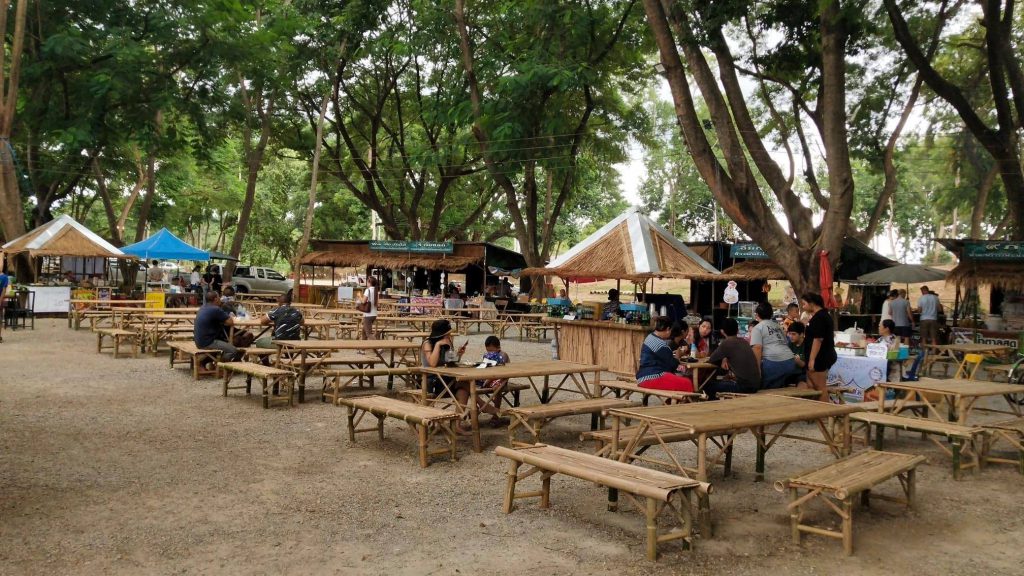
Again, I am led to believe that this is the work of a Japanese consortium. I’m not even sure that they know where this project is headed. Best avoided!
Finally, there is the ‘Interpretive Centre’ operated by the Australians. I will not further relate their place in this scheme until they dispose of the abomination of the recently installed plaque that besmirches the legacy of the US POWs.
